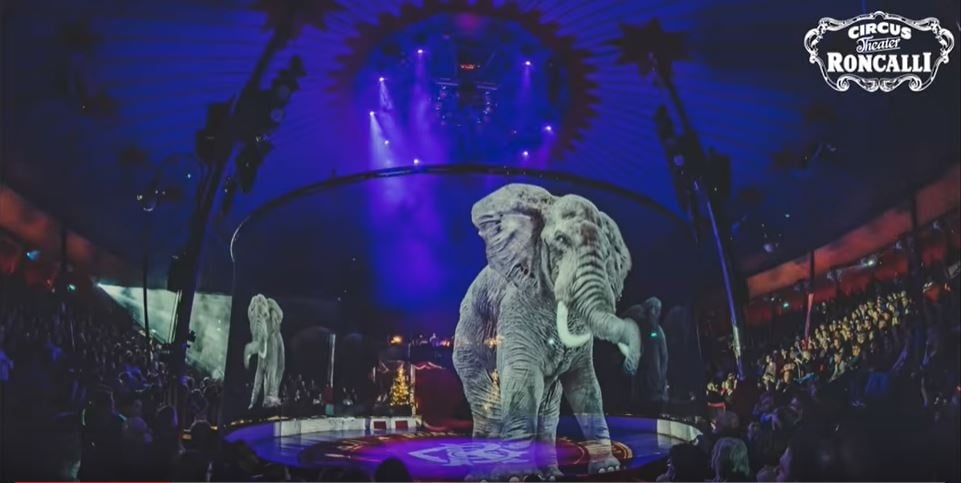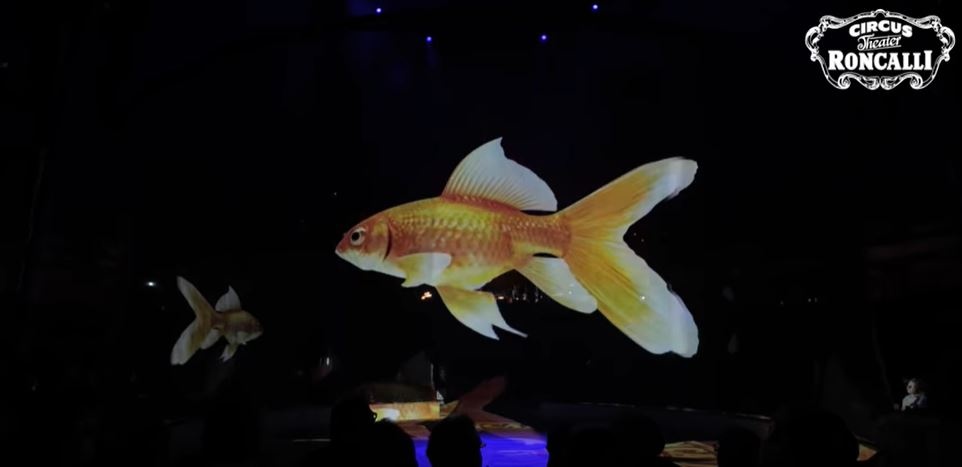
Image credit: Circus Roncalli
What’s a circus without the animals? Apparently, still very much a circus – only without the devastating cruel trade practices. Circus Roncalli, a circus based in Germany, uses 3D holograms of animals for its shows, in a bid to put an end to animal cruelty.
Founded in 1976, they started to make the shift from live animal performances to embracing holographic technology in the 1990s. As of 2018, the circus no longer employs live animals.
With the use of 11 projectors, audiences can get a 360° view of elephants and horses going around the big top. The audience will also get to witness larger-than-life projections of a huge goldfish, previously unthinkable in such a setting.

Image credit: Circus Roncalli(via YouTube)
The use of holographic technology could very well be the future of these traditional circus experiences. After all, we are residing in an era of virtual technology; light projection shows and the likes are growing in popularity too.
Beyond its ethical issues and implications, the sheer cost of transporting live animals for circus acts might also prompt these shows to rethink using live animals for shows. According to Handelsblatt, Circus Roncalli was spending US$90,000 per trip when they were still included animals their performances in 2016.
Ringling Bros. and Barnum & Bailey are examples of long-running circuses (they have been open for 146 years) that have gone out of business due to an increasing concern for animal welfare by audiences.
In fact, more than 40 countries in the world have put a ban and placed restrictions on animal performances.
While animal rights and cruelty still deserve more awareness, this is certainly a step into putting an end to unethical practices in our entertainment spaces and travel attractions.
And why stop at elephants, horses and goldfishes? I know I am not the only one looking forward to seeing dragons and other mythical creatures as well!
Also read: 9 Ethical Animal Sanctuaries That You Can Visit in Thailand





